Starting with the next major update, which is Windows 10 19H1, Microsoft is making a few changes to how Windows 10 manages disk space. Some disk space, reserved storage, will be set aside to be used by updates, apps, temporary files, and system caches. Here's how to reduce the size of the Reserved Storage.
Advertisеment
Windows 10 will reserve some disk space to ensure that critical OS functions always have access to disk space. If a user almost fills up her or his storage, several Windows and application scenarios become unreliable. For example, Windows Update may fail to download new update packages. Reserved storage solves this issue. It will be introduced automatically on devices that come with version 1903 pre-installed or those where 1903 was clean installed.
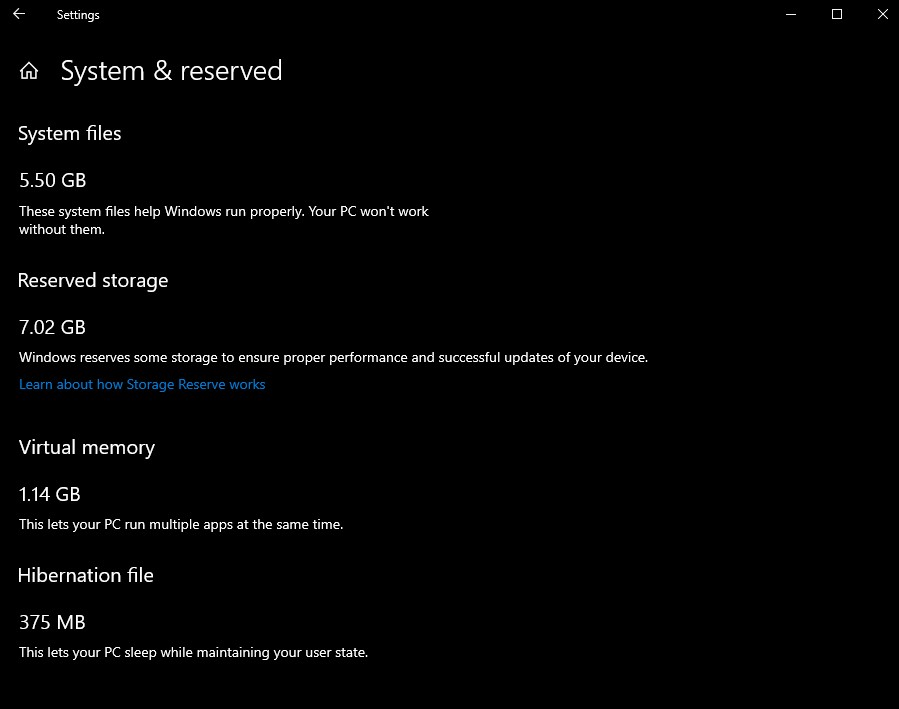
With reserved storage, updates, apps, temporary files, and caches are less likely to take away from valuable free space and should continue to operate as expected.
How much of storage is reserved
In the next major release of Windows (19H1), Microsoft anticipates that reserved storage will start at about 7GB, however the amount of reserved space will vary over time based on how you use your device. For example, temporary files that consume general free space today on your device may consume space from reserved storage in the future. Additionally, over the last several releases Microsoft reduced the size of Windows for most customers. Microsoft may adjust the size of reserved storage in the future based on diagnostic data or feedback. The reserved storage cannot be removed from the OS, but you can reduce the amount of space reserved.
Reduce Reserved Storage Size in Windows 10
According to Microsoft, you can uninstall optional features and language packages to reduce the amount of space that Windows 10 will reserve for updates.
Step 1. Uninstall optional features
- Open the Settings app.
- Go to Apps > Apps & features.
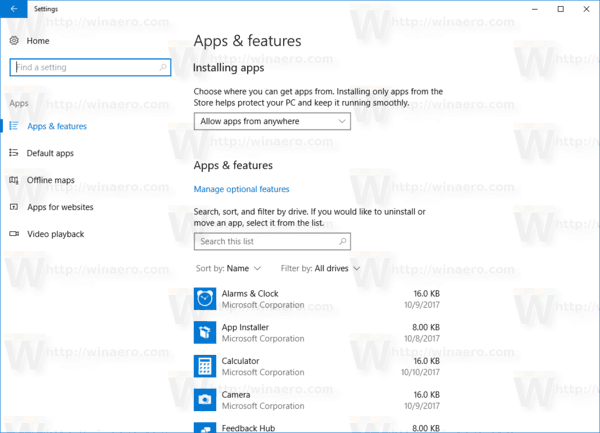
- On the right, click on the link Manage optional features.
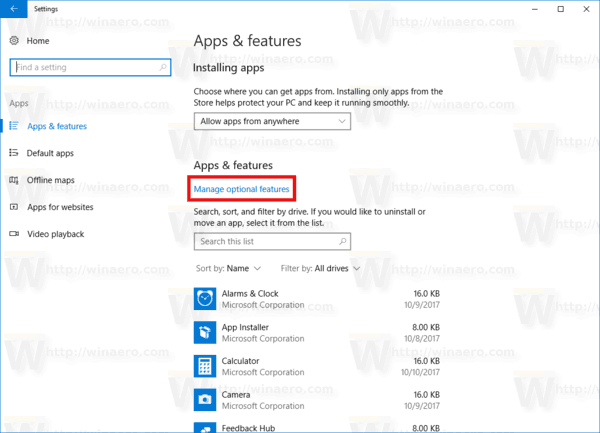
- To remove an optional feature, select it in the list of the installed feature, and click on the Uninstall button.
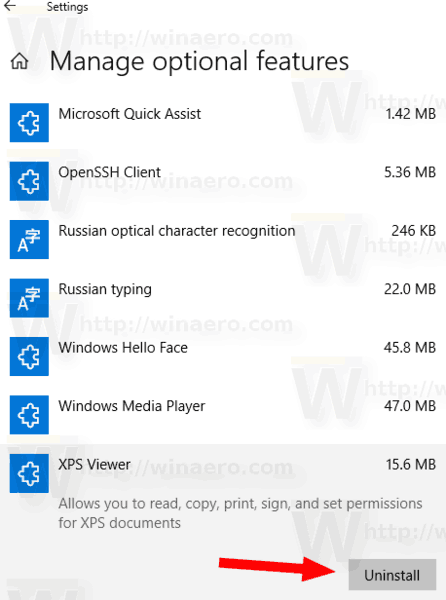
Step 2. Uninstall extra language packs
Windows is localized into many languages. Although most of our customers only use one language at a time, some customers switch between two or more languages. When additional languages are installed, Windows will increase the amount of reserved storage to ensure there is space to maintain these languages when updates are installed. You can see which languages are installed on your device by going to Settings > Time & Language > Language. You can reduce the amount of space required for reserved storage on your device by uninstalling languages you aren’t using.
- Open Settings.
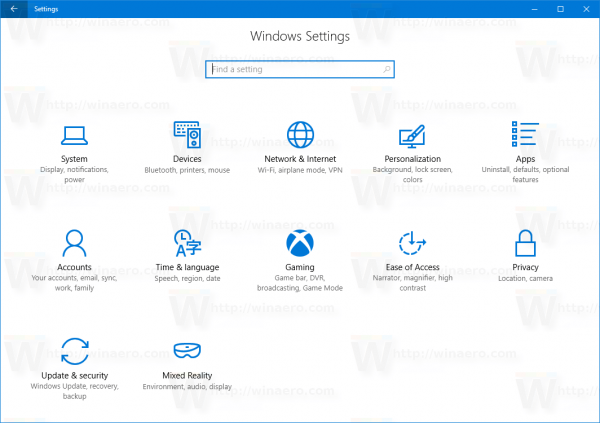
- Go to Time & Language.
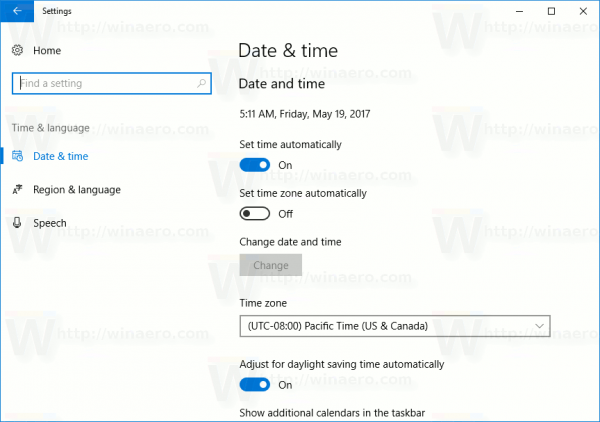
- On the left, click on the Region & Language.
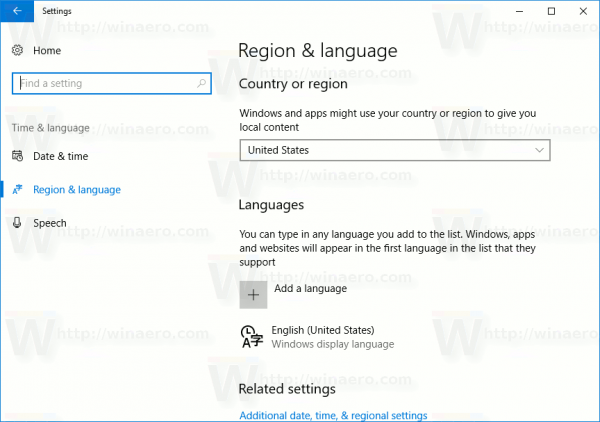
- Click on the language name in the list under "Region and Language".
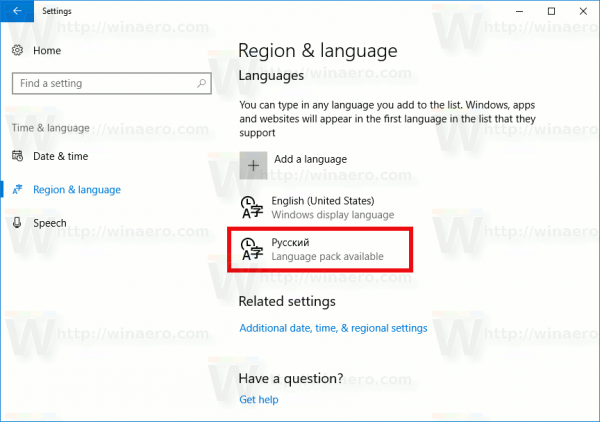
- The remove button will appear under the name. Click it and you are done:
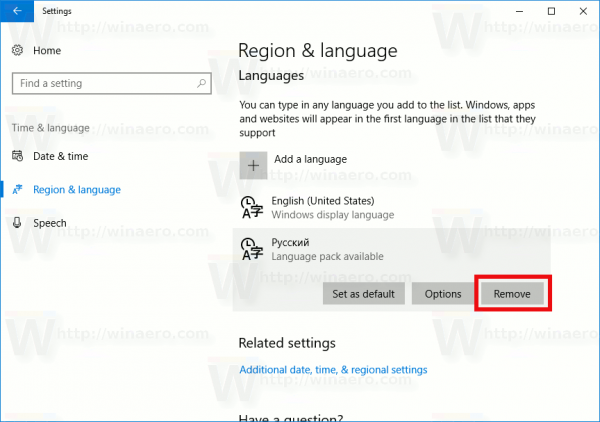
That's it.
Related articles
Support us
Winaero greatly relies on your support. You can help the site keep bringing you interesting and useful content and software by using these options:
